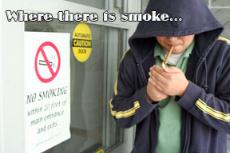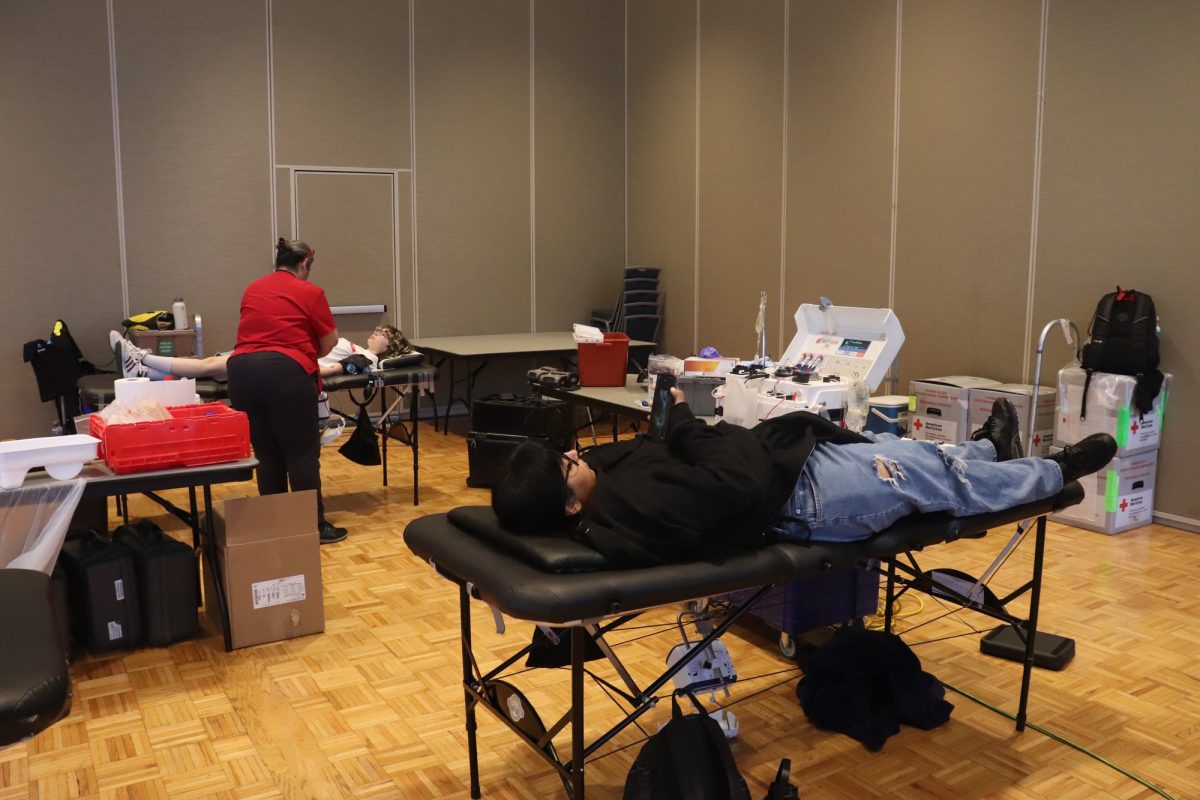Signs have been posted around selected parts of campus notifying smokers that they must smoke 20 feet away from the building.
However, currently that policy is not being enforced. Some students, and even faculty have been seen smoking right by the door of a building.
But that doesn’t seem to affect students like Elizabeth Lujan, biology major who said, “It doesn’t bother me as long as (smokers) don’t blow smoke in my face.”
Although the school is somewhat lenient to smoking anywhere on campus, the state law prohibits smoking inside a public building and within 20 feet of a main exit, entrance, or operable window of a public building.
It has become a well-known fact that secondhand smoke can cause cancer and other diseases. That is why health instructors are trying to educate students about the serious effects of smoking.
“I know that at least what I try to state is that you’re not guaranteed cancer, but (smoking) certainly increases the risk,” Gary Cain, health instructor and men’s basketball coach said. Many colleges and universities restrict smoking in certain areas, designate smoking to specific areas only or reinforce a non-smoking policy everywhere on campus.
The city of Calabasas recently passed a city law banning smoking in public, which took effect on St. Patrick’s Day.
For casual smokers like, Manuel Cardenas, criminal justice and music major, designating areas wouldn’t be a problem. “I wouldn’t care, I only smoke with my buddies.”
But the questions remain whether or not the campus should designate specific areas for smoking or prohibit smoking all together? “I’m in favor of a non-smoking area,” Cain said, “Because although certain areas would be designated, people would still become susceptible to the smoke.” Creating a non-smoking policy could end the problem for non-smokers, but for regular smokers, kicking the habit wouldn’t be as easy as throwing out their pack of cigarettes.
“If anyone’s forced to not smoke, I don’t know who’s going to do what. I personally would agree with anything that’s helping other people.
“If they had a designated area I would go smoke there. If there’s a law, I would not smoke at school,” Keon Jones, sociology major, said.
Although the campus has other issues to deal with, creating an environment that’s comfortable for everyone is an issue the campus has yet to address.
Vice President of Student Services and Superintendent Stephen B. Johnson said maybe the campus needs to post more signs that will reflect what the law says and play an educational role by explaining the health hazards.
Smoking cigarettes is the leading cause of lung cancer, and helping create a smoke free environment could contribute to decreasing the health risks smoking causes.
“I think it’s a difficult thing to enforce. Are you going to have campus police fining everyone?” Charles Gale, director of health services, said.
“Think of the rights of the smoker, if we make them go off-campus to smoke, we’re infringing on their rights. It’s a personal choice, it’s a personal freedom to destroy their lungs.”
Cigarettes contain a chemical called nicotine that becomes very addictive after a few smokes. And it’s not just cigarettes.
According to the American Cancer Society, tobacco contains at least 43 substances that cause cancer.
Facts found on thetruth.com state that:
? Every eight seconds someone in the world dies from a smoking related disease.
? In the U.S. about 50,000 people die from secondhand smoke related diseases each year.
? Tobacco kills more Americans than auto accidents, homicide, AIDS, drugs and fires combined.
Smoking is the leading cause of preventable death in America.Maybe the bigger issue on hand isn’t the lack of signs being posted, but a campus stance on the smoking issue.
“I think our campus is dealing with many other issues,” Cain said.
“(Smoking) is just not receiving particular attention. You want to do the right thing but how are you able to do that when you don’t have the necessary ability to enforce (a smoking policy)?”
According to the Center for Disease Control and Prevention the risk of dying from lung cancer is more than 22 times higher among men who smoke cigarettes, and about 12 times higher among women who smoke cigarettes compared to those who have never smoked.
Cigarette smoking increases the risk for many types of cancer, including cancers of the lip, oral cavity, and pharynx; esophagus; pancreas; larynx; lung; uterine cervix; urinary bladder; and the kidneys.
Smoking can also cause emphysema and a wide array of respiratory diseases like bronchitis and chronic obstructive lung disease.
According to smokefreedom.net there are 4,000 ingredients other than tobacco in cigarettes.
Some of the ingredients are: acetone, nail polish remover; ammonia, household cleaner; arsenic, used in rat poison; benzene, used for making dyes and synthetic rubber; butane, used in lighter fluid; carbon monoxide, a poisonous gas; cadmium, used in batteries; cyanide, a poison; hydrazine, rocket fuel; lead, which is poisonous in high doses; methoprene, an insecticide; and polonium, a radioactive substance.











